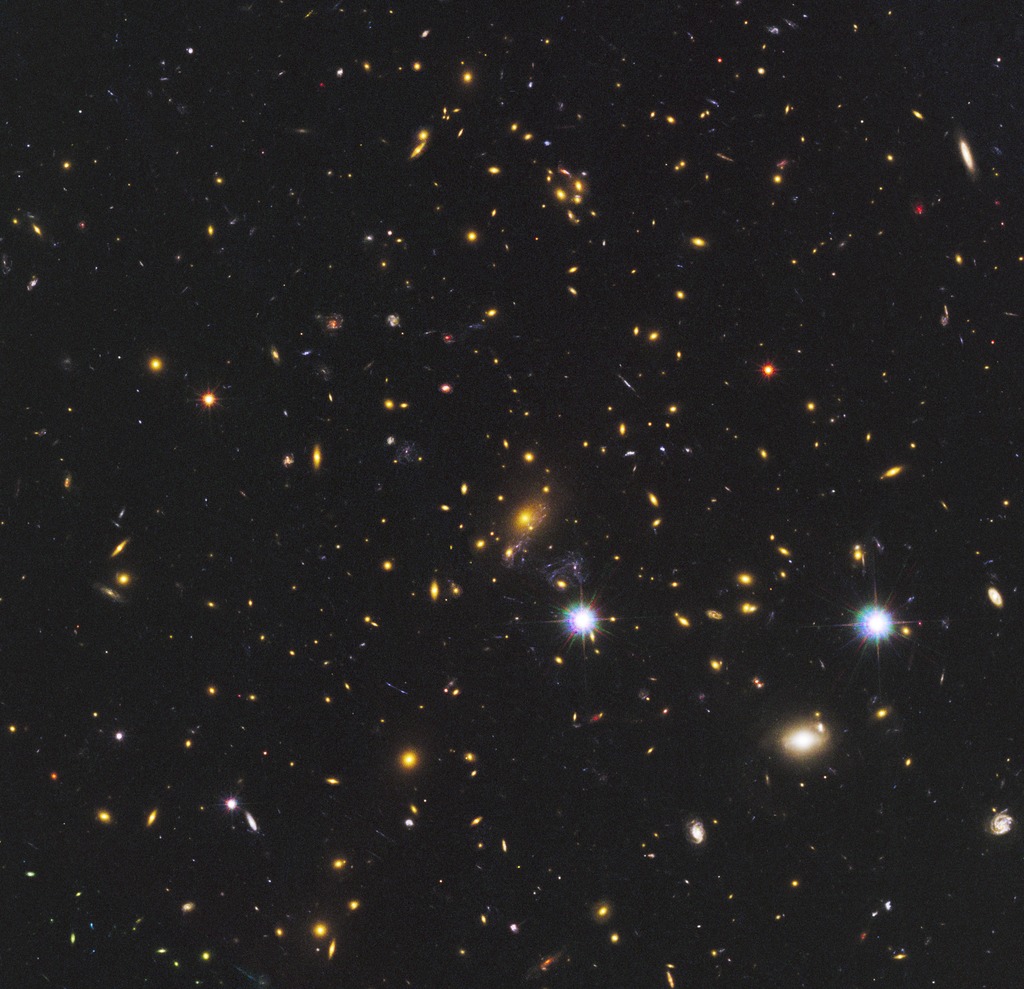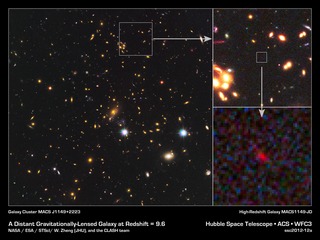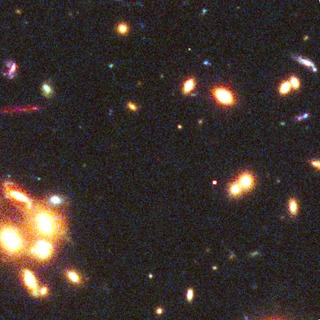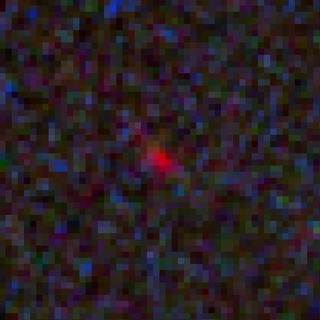
Credit: NASA/ESA/STScI/W. Zheng (JHU), and the CLASH team
Observation • September 19th, 2012 • ssc2012-12a1
ssc2012-12a1
With the combined power of NASA's Spitzer and Hubble space telescopes, as well as a cosmic magnification effect, astronomers have spotted what could be the most distant galaxy ever seen. Light from the primordial galaxy traveled approximately 13.2 billion light-years before reaching NASA's telescopes, shining forth from the so-called cosmic dark ages when the universe was just 3.6 percent of its present age.
Astronomers relied on gravitational lensing to catch sight of the early, distant galaxy. In this phenomenon, predicted by Albert Einstein a century ago, the gravity of foreground objects warps and magnifies the light from background objects.
In this image, the many galaxies of a massive cluster called MACS J1149+2223 dominate the scene. Gravitational lensing by the giant cluster brightened the light from the newfound galaxy, known as MACS 1149-JD, some 15 times (though it is not readily apparent in this view).
About the Object
- Name
- MACS J1149+2223
- Type
- Galaxy
- Cosmology > Morphology > Deep Field
- Cosmology > Phenomenon > Lensing
- Distance
- 5,300,000,000 Light Years
- Redshift
- 0.544
Color Mapping
| Band | Wavelength | Telescope |
| Infrared | 1.1 µm | Hubble WFC3 |
| Infrared | 1.1 µm | Hubble WFC3 |
| Infrared | 1.3 µm | Hubble WFC3 |
| Infrared | 1.4 µm | Hubble WFC3 |
| Infrared | 1.6 µm | Hubble WFC3 |
| Optical | 435 nm | Hubble ACS |
| Optical | 475 nm | Hubble ACS |
| Optical | 555 nm | Hubble ACS |
| Optical | 606 nm | Hubble ACS |
| Optical | 625 nm | Hubble ACS |
| Optical | 775 nm | Hubble ACS |
| Optical | 814 nm | Hubble ACS |
| Optical | 850 nm | Hubble ACS |
Astrometrics
- Position (J2000)
- RA =11h 49m 34.7s
- Dec = 22° 24' 4.8"
- Field of View
- 2.6 x 2.5 arcminutes
- Orientation
- North is 12.8° left of vertical







